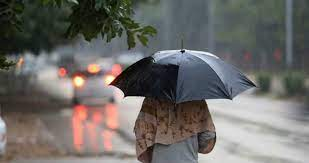Upcoming Weather Conditions in Central India: Rainfall on the Horizon?
As we move into the changing season, Central India is gearing up for a possible spell of rainfall in the coming days. With fluctuating temperatures and increased cloud cover, there is a high probability of showers across various regions, bringing relief from the dry and warm conditions experienced in the past weeks.
Weather Pattern and Possible Rainfall
A combination of atmospheric factors, including moisture incursion from surrounding areas and developing weather systems, is expected to contribute to light to moderate rainfall in several parts of Central India. States like Madhya Pradesh, Chhattisgarh, and Maharashtra may experience sporadic showers, particularly in isolated regions.
Impact on Temperature and Environment
With the arrival of rain, temperatures are likely to dip slightly, offering much-needed respite from the ongoing heat. The increased humidity might make the weather feel slightly warmer initially, but a fresh spell of cool winds post-rain will enhance comfort levels.
Effects on Agriculture and Daily Life
For farmers, this rainfall could be a boon, particularly for Rabi crops and early Kharif crop preparations. However, unseasonal heavy showers could pose a risk to standing crops. Urban areas might witness temporary waterlogging or disruptions in daily commuting due to sudden downpours.
Precautionary Measures
-
Keep an umbrella or raincoat handy while stepping out.
-
Farmers should stay updated with local advisories regarding weather changes.
-
Drivers should be cautious of slippery roads due to the first rain.
-
Those prone to respiratory issues should take precautions against increased humidity levels.
As the sky turns cloudy and the first drops fall, Central India can look forward to some much-needed rain. Stay prepared, stay safe, and embrace the refreshing change in weather!





















